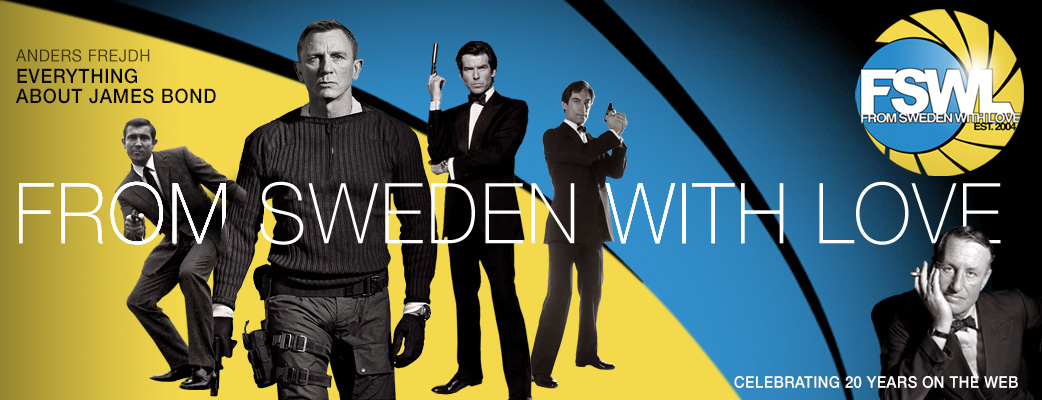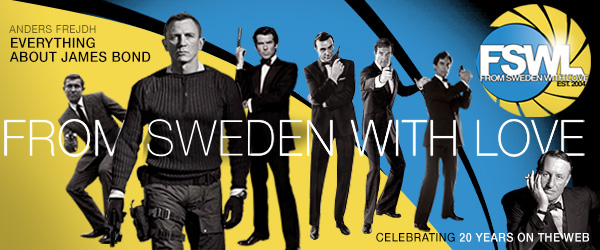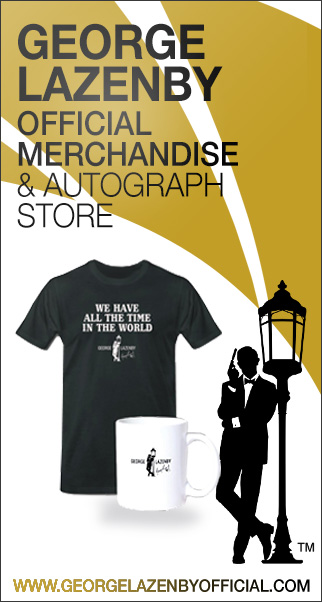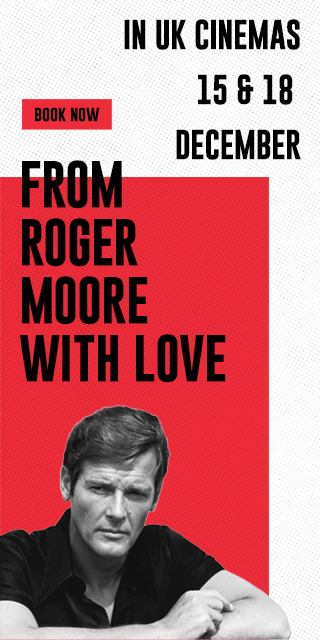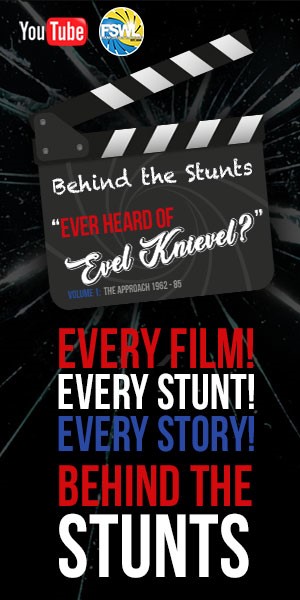Website last updated: 10-6-2025
Home
Book & Film reviews
Competitions
Event
FSWL Merchandise
Interviews
James Bond 007 articles
James Bond 007 collection
James Bond 007 films
James Bond 007 games
James Bond 007 literature
James Bond 007 news
James Bond 007 products
James Bond 007 shop
James Bond 007 stars
James Bond Fan Clubs
Swedes in the Bond films
In Memoriam of James Bond Director Terence Young (1915-1994)
By: Anders Frejdh
Published:
2004-09-06
2004-09-06

The British cinema - as opposed to the British film industry - first began to consider its responsibilities during the Second World War. The quantity and vitality of British films produced between 1945 and 1950 is astonishing, with the serious variety attracting large audiences as never before. Between them, the benevolent flour milling mogul Arthur Rank and the creative Hungarian paterfamilias Alexander Korda encouraged new talents, none of whom was more promising than Terence Young.
"I can't say enough about Terence Young. I adored him and loved working with him. He was one of the most elegant gentlemen I have ever met with a very mischievous playful side."
- Martine Beswicke (Zora in From Russia with Love & Paula Caplan in Thunderball)
Academy Award winning Dubbing Editor Norman Wanstall remembers working with Terence:
"As Peter Hunt's assistant I had little personal contact with Terence but I could see he was ideal to direct a Bond film as he had the image of a Fleming 'Bond' himself. He was respected and loved by the crew and we were a very happy team.
My closest contact with him was the sad occasion when we went to London together to re-record certain lines with Pedro Armend√°riz before he returned to the States. I had no idea at the time that Pedro was very seriously ill so I treated the occasion as just another post-sync session. Terence obviously knew that we needed to record the lines before it was too late, and to Pedro's credit he was totally professional in the way he delivered his lines. It didn't seem possible that within days of returning to the States Pedro took his own life.
Another memorable occasion was when we were dubbing From Russia with Love and we'd reached the scene where Bond was in the gypsy camp in Turkey which had been shot on the back-lot at Pinewood Studios. I knew the scene had to sound Turkish so I'd booked a number of Turkish men and women to come to the Studio and we had a great session recording them reacting throughout the scene in their own language. Terence was so impressed and happy when he heard genuine Turkish voices throughout the whole scene that he gave me a lot of praise. That's the sort of man he was."
About Terence Young:
Young's first two films as director, for Rank, came out early in 1948, proving him anxious to work well outside the British mainstream. One Hour With You, with a typically playful script by Caryl Brahms and SJ Simon, imagined the misfortunes of Patricia Roc wooed by the tenor Nino Martini while stranded in Italy. Corridor of Mirrors gave even more meaning to the words bizarre, baroque - as Eric Portman, at his most magniloquent, brooded over a Renaissance painting in his dark mansion, convinced that he and his mistress, Edana Romney, are reincarnations of the lovers in it.
Earlier Young had worked as screenwriter on some interesting films with the director Brian Desmond Hurst. First On the Night of the Fire (1939), a fugitive-from-justice tale, heavily influenced by Marcel Carne, and then Dangerous Moonlight (1941), a wartime love affair between a Polish airman and an American journalist with the 'Warsaw Concerto' thrown in as a bonus. Hungry Hill (1946), Daphne du Maurier's chronicle of an Irish family with Margaret Lockwood as its matriarch; and Theirs is the Glory (1946), a semi-documentary account of the failure of the Battle of Arnhem. During service with the Armoured Guards Division Young was given leave to work with Clive Brook on the screenplay for On Approval (1944), based on Frederick Lonsdale's comedy and as directed by Brook, with himself, Beatrice Lillie, Googie Withers and Roland Culver, a happy version of a filmed play.
Young's first job with Rank was to hack a screenplay out of Mary Webb's novel Precious Bane, which he was scheduled to direct with Stewart Granger and Jean Simmons, but, Rank got cold feet at the last minute and transferred him to a comedy with Granger, Woman Hater (1948). Young's other film that year, They Were Not Divided, was a project dear to his heart, as it followed two Welsh Guardsmen from a drill on a barracks square to D-Day and beyond.
In 1954 he directed That Lady, the story of the romance of the one-eyed Princess of Eboli which scandalised the court of Philip II. Young blamed the film's failure on the fact that that he had asked for Laurence Olivier and Ava Gardner, but had been given Gilbert Roland and Olivia de Havillland. With Zoltan Korda he then co-directed Storm Over the Nile (1955), a remake of 1939 The Four Feathers with footage from that stretched out for Cinema Scope.
Young had already experienced his most important career move. Two American producers, Irving Allen and Albert R. Broccoli, taking advantage of US tax concessions for working abroad, came to Britain with Alan Ladd to make The Red Beret (1953), in which Ladd was an American officer who does a T. E. Lawrence-like stint in the ranks of the British regiment. They had admired Young's work on his war movies and though he won no kudos for this one it was popular. He stayed with their company, Warwick Films, establishing himself as a director of transatlantic action movies.
He broke away for another personal project, Serious Charge (1959), in which a vengeful Teddy boy accuses a vicar of sexual assault. He then accepted the challenge of bringing four of Roland Petit's ballets to the big screen in Black Tights (1961). Maurice Chevalier introduced these diverse pleasures, including Moira Shearer and Petit in Cyrano de Bergerac, Cyd Charisse as a merry widow and Zizi Jeanmaire with him in Carmen.
Its success was not unqualified, and Young went on to co-direct, with Ferdinando Baldi, Orazi E Curiazi (1961), with Alan Ladd decidedly ill-at-ease as Horatio at the bridge. Cut, dubbed and retitled Duel of Champions, it got a few bookings some years later.
By that time Young's career had soared. Broccoli had teamed up with Harry Saltzman to film Dr. No (1962), the sixth 007 novel by Ian Fleming about the British secret service agent, James Bond. Saltzman, the American backer of such films as Look Back in Anger, had been looking for something more evidently popular. Apart from the two of them nobody believed in it, including the distributor (United Artists), who imposed budget restrictions; half a dozen actors turned down the role before it was accepted by the little-known and unlikely Sean Connery. (Young had previously directed Connery in 1957 in a small role in Action of the Tiger.) The notices were mediocre and Fleming was privately contemptuous, but the film went on to knock the box-office for six. With an injection of humour and Connery splendidly easing himself into the role, From Russia with Love (1963) and then Thunderball (1965) proved that Young was a first-rate action director and that the public couldn't get enough of 007.
When Young abandoned Bond, it was with mixed results. The Amorous Adventures of Moll Flanders (1965) was an attempt by Marcel Hellman to duplicate the success of Tom Jones. But Warner Bros then put Young in charge of an adaptation of a long-running play, Wait Until Dark (1967), with Audrey Hepburn menaced by thugs, including a scarey Alan Arkin - and that is surely one of the best thrillers of the decade.
Young followed it with an Italian version of The Rover (1967), which has been little seen despite the presence of Rita Hayworth and Anthony Quinn, and Mayerling (1968) with James Mason and Ava Gardner under-used as Franz Joseph and Elisabeth and Omar Sharif and Catherine Deneuve as the lovers. Several other co-productions with either France or Italy included The Valachi Papers (1972), a Mafia tale with Charles Bronson.
Young's long-delayed first Hollywood film, Klansman (1974), with Richard Burton and Lee Marvin, was scathingly received - one reason why Paramount pulled the plug on The Jackpot, also with Burton, during production. But that company invited Young back for Bloodline (1979), based on a Sidney Sheldon bestseller which managed to combine a plot about company greed with one about the making of porn movies. Audrey Hepburn and James Mason headed the cast, and after the dreadful notices, she commented that she had made it both because the locations didn't take her far from her family and because she liked the director.
Young attracted Olivier to Inchon (1980) and The Jigsaw Man (1983), in which he respectively played General MacArthur and an admiral involved with Michael Caine, a former head of MI6 who had defected. Inchon was financed by the Rev Sun Myung Moon to an estimated 100 Million dollars but only took peanuts in the US and never had a cinema release in the UK. The second ran into financial difficulties during filming and went direct to video.
This is a sad ending to an extraordinary career. No one would class Young with his contemporaries David Lean and Carol Reed, but he was one among others embraced by Hollywood: Michael Anderson, J. Lee Thompson, Ronald Neame, Ken Annakin and Lewis Gilbert. They gave Hollywood some excellent films and the American film industry liked them because they thought in commercial terms.
Editor's note:
For other James Bond directors presented on From Sweden with Love, click here.
Photo above:
Terence Young with Sean Connery (James Bond) and Mollie Peters (Patricia Fearing) on the set of Thunderball. © 1965 Danjaq S.A. & United Artists Corporation. All rights reserved.
For more information about Terence Young's directorial career, check out his profile on IMDB:
www.imdb.com/name/nm0950109/
Tags:
#dr_no
#in_memoriam
#james_bond_directors
#martine_beswicke
#news
#norman_wanstall
#terence_young
Tweet
